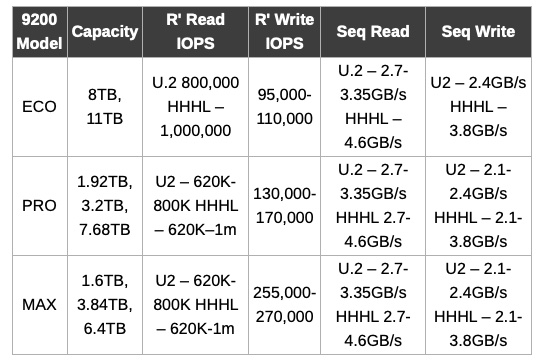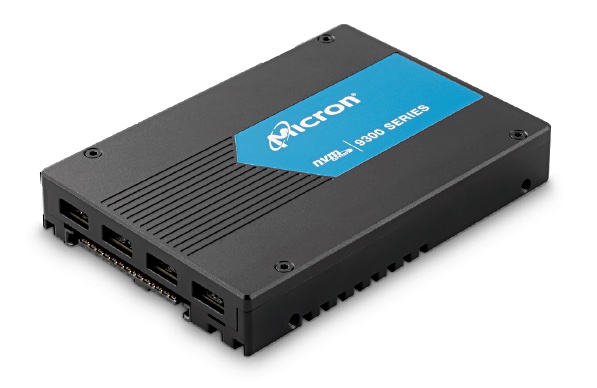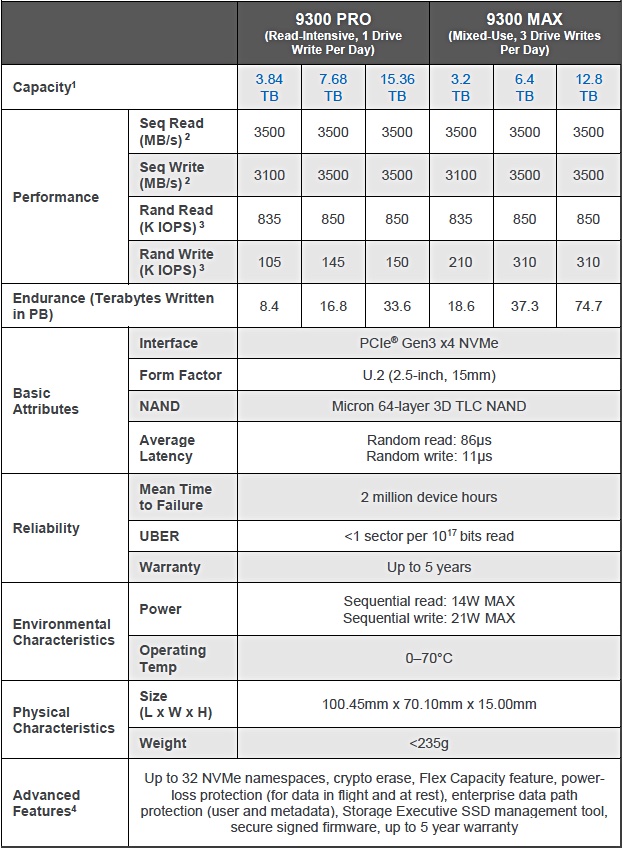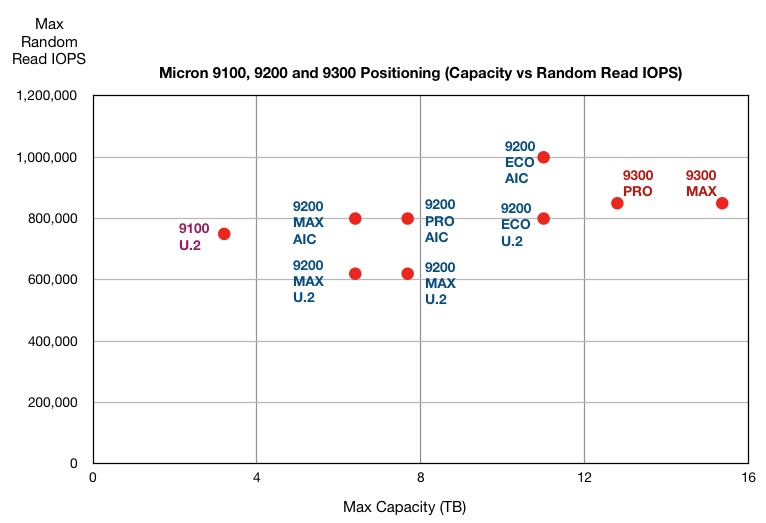Micron has used the launch of the 9300 to prune its NVME SSD line-up. More importantly, the drive outclasses the competition, according to our informal survey of products made by rival vendors.
The 9300 drives are available now but Micron has not published pricing at time of publication.
The 9300 predecessor, the Micron 9200, had two formats, three products and 8 capacity levels. With the 9300 refresh Micron offers a single format, two products and six capacities.
The NVMe-connected SSDs use TLC (3bits/cell) 3D NAND, with the 2017-era 9200s using 32-layers and the 9300s using 64-layers. The earlier 9100 Series used planar or single layer MLC (2bits/cell) flash.

A PCIe gen 3 x 8 lane interface helps achieve the million random read IOPS for the half-height, half-length add-in card format. The U.2 or 2.5-inch drive format has the standard 4 PCIe gen 3 lanes.

The 9300 range junks the add-in-card format, standardising on the U.2, and also retire the ECO high capacity variant. The 9300 PRO and 9300 MAX products each have three capacity levels: 3.84TB, 7.68TB and 15.36TB for the PRO; and 3.2TB, 6.4TB, and 12.8TB for the MAX.
The 9300 Pro is for read-intensive use while the 9300 PRO is for mixed read-write workloads. The latter has more cells set aside for over-provisioning, hence its smaller capacity,

Blocks & Files has made a chart comparing the 9100, 9200 and 9300 products on maximum random read IOPS and capacity to provide at-a-glance positioning.

We can instantly see that the absence of an 8-lane enhanced 9300 add-in card product means the 9300s are slower at random reads than the 9200 ECO add-in-card.
The 9300s are more power-efficient than the 9200s, needing 14 and 21 watts when sequentially reading and writing. That is 28 per cent better than the 9200s.
They also have a shorter latency – 86μs / 11μs read/write versus the 9200’s 92-150μs / 21μs read/write. Both the 9200 and the 9300 are faster in this respect than the earlier 9100 whose latency was 120μs / 30μs read/write.
Competing drives
Of the competing suppliers Samsung does not have TLC 64-layer U.2 product, preferring to build M.2 gumstick card drives. Seagate does likewise with its FireCuda 510 and Barracuda 510 drives using Toshiba NAND.
Toshiba’s CD5 uses 64-layers of TLC flash with a capacity range of 960GB to 7.68TB and 500,000 maximum random read IOPS. It is outclassed in capacity and speed.
Western Digital’s Ultrastar DC SN630 uses the same kind of flash, and comes in read-intensive (up to 7.68TB) and mixed-use (to 6.4TB) form. Random Read IOPS top out at 363,750, so this product set is outclassed by the Micron 9300s as well.
Intel has a D5 P4350 which uses QLC (4bits/cell) 64-layer NAND and maxes out at 7.68TB. It does up to 427,000 random read IOPS and doesn’t measure up to the 9300s either.
Dive into the 9300 section of its website to find technical and product briefs.








